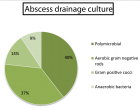Abstract
Research Article
Canine Distemper Virus detection based in Hemaglutinine Gene as target in Reverse Transcriptase-Polymerase Chain Reaction
Jara P, Céspedes P and Navarro C*
Published: 27 December, 2018 | Volume 2 - Issue 1 | Pages: 034-041
Canine Distemper have become a major concern within the veterinary clinical work. Thus, the appearance of many cases of canine distemper in adult animals with their vaccination plan up to date has alarmed veterinarians. Many cases of canine distemper have become a major concern within the clinical veterinary task. The purpose of this work was to detect the gene of hemagglutinin of the virus canine distemper, by using the Polymerase Chain Reaction associated with Reverse transcription (RT-PCR), as confirmation of the clinical diagnosis of disease. For this, peripheral blood samples of animals were used clinically patients and were grouped according to their date of extraction and using vaccines commercial as control.
The results allow to demonstrate a high sensitivity of the technique, besides allowing the use of samples up to seven days of storage at 4°C, despite the fragility of RNA viral.
Detection of canine distemper virus haemagglutinin gene in field samples and its high sensitivity, suggests studying its use as a diagnostic tool complementary to the clinical diagnosis of canine distemper in our country.
Read Full Article HTML DOI: 10.29328/journal.ivs.1001012 Cite this Article Read Full Article PDF
Keywords:
Canine distemper; Hemagglutinin; Early diagnosis
References
- Martella V, Elia G, Lucente MS, Decaro N, Lorusso E, et al. Genotyping canine distemper virus (CDV) by a hemi-nested multiplex PCR provides a rapid approach for investigation of CDV outbreaks. Vet Microbiol. 2007; 122: 32–42. Ref.: https://goo.gl/Za8yvN
- Fenner F, Bachmann PA, Gibbs EP, Murphy FA, Studert MJ, et al. Veterinary virology. 349-386. Ref.: https://goo.gl/RRaa9u
- Ader N, Brindley MA, Avila M, Origgi FC, Langedijk JP, et al. Structural rearrangements of the central region of the morbillivirus attachment protein stalk domain trigger F protein refolding for membrane fusion. J Biol Chem.2012; 287: 16324-16334. Ref.: https://goo.gl/zKkS5i
- Avila M, Alves L, Khosravi M, Ader N, Origgi F, et al. Molecular determinants defining the triggering range of prefusion F complexes of canine distemper virus. J Virol. 2014; 88: 2951-2966. Ref.: https://goo.gl/Nv4oEa
- Appel MJ, Summers BA. Pathogenicity of morbilliviruses for terrestrial carnivores. Vet. Microbiol. 1995; 44: 187–191. Ref.: https://goo.gl/3FJu5n
- Tan B1, Wen YJ, Wang FX, Zhang SQ, Wang XD, et al. Pathogenesis and phylogenetic analyses of canine distemper virus strain ZJ7 isolate from domestic dogs in China. Virol J. 2011; 8: 520. Ref.: https://goo.gl/8uJscR
- Terio KA, Craft ME. Canine Distemper Virus (CDV) in Another Big Cat: Should CDV Be Renamed Carnivore Distemper Virus? mBio. 2013; 4: e00702-13 Ref.: https://goo.gl/6TvADv
- Appel MJ, Yates RA, Foley GL, Bernstein JJ, Santinelli S, et al. Canine distemper virus epizootic in lions, tigers and leopards in North America. J Vet Diagn Invest. 1994; 6: 277–288. Ref.: https://goo.gl/4bfuwh
- Deem SL, Spelman LH, Yates RA, Montali RJ. Canine distemper in terrestrial carnivores: a review. J. Zoo. Wildl. Med. 2000; 31: 441-451. Ref.: https://goo.gl/nK6ZD7
- Pardo ID, Johnson GC, Kleiboeker SB. Phylogenetic characterization of canine distemper viruses detected in naturally infected dogs in North America. J. Clin. Microbiol. 2005; 43: 5009-5017. Ref.: https://goo.gl/wHP6vK
- Lamb R, Parks G. Paramixoviridae: the viruses and their replication.In: Knipe, D.; Howley, P. Fields Virology 5ª ed. Lippincott Williams & Willkins. Philadelphia, USA. 2007; 1449-1496. Ref.: https://goo.gl/JuHA92
- Cerda L, Mathieu C, Quinteros G. Primer aislamiento de virus distemper canino en Chile. XIV Congreso Panamericano de Ciencias Veterinarias, Acapulco, México. 1994;
- Navarro C, Pizarro J, Celedón M. Virus distemper canino en Chile. XII Congreso Nacional de Medicina Veterinaria, Chillán, Chile. 2002;
- Murphy F, Gibbs E, Horzinek M, Studdert M. Veterinary Virology: The Third Edition. Elsevier. California, USA. 1999; 629. Ref.: https://goo.gl/jz3FD4
- Carvalho OV, Botelho CV, Torres CG, Scherer PO, Pinheiro JA, et al. Immunopathogenic and neurological mechanisms of canine distemper virus. Adv Virol. 2012; 2012: 163860. Ref.: https://goo.gl/C1AoHo
- Perrone D, Bender S, Niewiesk S. A comparison of the immune responses of dogs exposed to canine distemper virus (CDV) - Differences between vaccinated and wild-type virus exposed dogs. Can J Vet Res.2010: 74: 214-217. Ref.: https://goo.gl/cS6pZA
- Cho HS, Park NY. Detection of canine distemper virus in blood samples by reverse transcription loop-mediated isothermal amplification. J Vet Med B Infect Dis Vet Public Health. 2005; 52: 410-413. Ref.: https://goo.gl/cmhsst
- Sereda AD, Gavrilov KE, Fugina LG. Distemper of carnivore: proliferative activity of lymphocytes in sick and vaccinated dogs. Vopr Virusol. 1999; 44: 257-261. Ref.: https://goo.gl/jf6NBe
- Céspedes PF, Cruz P, Navarro C. Modulación de la respuesta inmune durante la infección por virus distemper canino: implicancias terapéuticas y en el desarrollo de vacunas. Arch Med Vet. 2010; 42: 15-28. Ref.: https://goo.gl/6mLCju
- Berríos P, Durán C. Principales enfermedades virales de los caninos. Situación en Chile. Monogr Electron Patol Vet. 2005; 2: 68-93. Ref.: https://goo.gl/2qbQ84
- Iwatsuki K, Miyashita N, Yoshida E, Gemma T, Shin Y, et al. Molecular and phylogenetic analyses of the haemagglutinin (H) proteins of field isolates of canine distemper virus from naturally infected dogs. Journal of General Virology. 1997; 78: 373–380. Ref.: https://goo.gl/82ECTm
- Mochizuki M, Hashimoto M, Hagiwara S, Yoshida Y, Ishiguro S. Genotypes of canine distemper virus determined by analysis of the hemagglutinin genes of recent isolates from dogs in Japan. J Clin Microbiol. 1999; 37: 2936-2942. Ref.: https://goo.gl/eLNKWK
- Martella V, Cirone F, Elia G, Lorusso E, Decaro N, et al. Heterogeneity within the hemagglutinin genes of canine distemper virus (CDV) strains detected in Italy. Veterinary Microbiology. 2006; 116: 301–309. Ref.: https://goo.gl/ktwa8f
- Gemma T, Miyashita N, Shin YS, Okita M, Mori T, et al. Serological survey of canine distemper virus infection using enzyme-linked immunosorbent assay. J Vet Med Sci. 1995; 57: 761-763. Ref.: https://goo.gl/72s5wz
- Blixenkrone-Möller M, Svansson V, Appel M, Krogsrud J, Have P, et al. Antigenic relationship between field isolates of morbilliviruses from different carnivores. Arch. Virol. 1992; 123: 279–294. Ref.: https://goo.gl/5AEzh4
- von Messling V, Zimmer G, Herrler G, Haas L, Cattaneo R. The Hemagglutinin of Canine Distemper Virus Determines Tropism and Cytopathogenicity. J Virol. 2001; 75: 6418-6427. Ref.: https://goo.gl/jRyFu4
- Ke GM, Ho CH, Chiang MJ, Sanno-Duanda B, Chung CS, et al. Phylodynamic analysis of the canine distemper virus hemagglutinin gene. BMC Vet Res. 2015; 11: 164. Ref.: https://goo.gl/yzJziv
- Shin Y, Mori T, Okita M, Gemma T, Kai C, et al. Detection of canine distemper virus nucleocapsid protein gene in canine peripheral blood mononuclear cells by RT-PCR. J Vet Med Sci.1995; 57: 439–445. Ref.: https://goo.gl/cDdWQz
- Salas V, Pizarro J, Navarro C. Phylogenetic analysis of canine distemper virus detected in Chile. International Journal of Current Research. 2018; 10: 72402-72407. Ref.: https://goo.gl/rggJ2k
- Abarca MJ, Hidalgo E, Raggi LA, Navarro C. Genotypic evidence of infection by Canine distemper virus in maned wolf from a zoological collection in Chile. IJSER. 2018; 9: 2055-2064. Ref.: https://goo.gl/mf3u4v
- Gallegos M, Céspedes P, Pizarro J, Navarro C. Is the M gene of Canine Distemper virus an eligible target for detection? East African Scholars J Agri Life Sci. 2018; 1: 22-32. Ref.: https://goo.gl/dAjV9U
- Harder TC, Kenter M, Vos H, Siebelink K, Huisman W, et al. Canine distemper virus from diseased large felids: biological properties and phylogenetic relationships. J Gen Virol. 1996; 77: 397–405. Ref.: https://goo.gl/53K3iz
Figures:
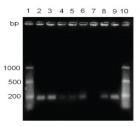
Figure 1
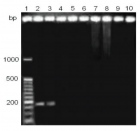
Figure 2
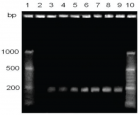
Figure 3
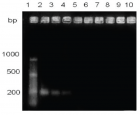
Figure 4
Similar Articles
-
Canine Distemper Virus detection based in Hemaglutinine Gene as target in Reverse Transcriptase-Polymerase Chain ReactionJara P,Céspedes P,Navarro C*. Canine Distemper Virus detection based in Hemaglutinine Gene as target in Reverse Transcriptase-Polymerase Chain Reaction. . 2018 doi: 10.29328/journal.ivs.1001012; 2: 034-041
-
Use of the Reverse Transcription-Polymerase Chain Reaction for differential detection of two lineages of the canine distemper virus in ChileBolívar P,Céspedes PF,Navarro C*. Use of the Reverse Transcription-Polymerase Chain Reaction for differential detection of two lineages of the canine distemper virus in Chile. . 2019 doi: 10.29328/journal.ivs.1001014; 3: 005-013
Recently Viewed
-
Pulmonary Infarction Mimicking An Aspergilloma In A Heart Transplant RecipientAntonacci F*,Belliato M,Bortolotto C,Di Perna D,Dore R,Orlandoni G,D’Armini AM. Pulmonary Infarction Mimicking An Aspergilloma In A Heart Transplant Recipient . J Clin Med Exp Images. 2017: doi: 10.29328/journal.jcmei.1001002; 1: 005-006
-
Recurrent Peripheral Ameloblastoma of the Mandible: A Case ReportAngela Jordão Camargo*,Mayara Cheade,Celso Martinelli,Plauto Christopher Aranha Watanabe. Recurrent Peripheral Ameloblastoma of the Mandible: A Case Report. J Clin Med Exp Images. 2017: doi: 10.29328/journal.jcmei.1001003; 1: 007-010
-
The Risk Factors for Ankle Sprain in Cadets at a Male Military School in Iran: A Retrospective Case-control StudyFarzad Najafipour*,Farshad Najafipour,Mohammad Hassan Majlesi,Milad Darejeh. The Risk Factors for Ankle Sprain in Cadets at a Male Military School in Iran: A Retrospective Case-control Study. J Clin Med Exp Images. 2017: doi: 10.29328/journal.jcmei.1001005; 1: 020-026
-
Magnetic Resonance Imaging Can Detect Symptomatic Patients with Facet Joint Pain. A Retrospective AnalysisWolfgang Freund*,Frank Weber,Reinhard Meier,Stephan Klessinger. Magnetic Resonance Imaging Can Detect Symptomatic Patients with Facet Joint Pain. A Retrospective Analysis. J Clin Med Exp Images. 2017: doi: 10.29328/journal.jcmei.1001006; 1: 027-036
-
Secondary Onychomycosis Development after Cosmetic Procedure-Case ReportMariusz Dyląg*,Emilia Flisowska,Patryk Bielecki,Maria Kozioł-Gałczyńska,Weronika Jasińska. Secondary Onychomycosis Development after Cosmetic Procedure-Case Report . J Clin Med Exp Images. 2017: doi: 10.29328/journal.jcmei.1001007; 1: 037-045
Most Viewed
-
Impact of Latex Sensitization on Asthma and Rhinitis Progression: A Study at Abidjan-Cocody University Hospital - Côte d’Ivoire (Progression of Asthma and Rhinitis related to Latex Sensitization)Dasse Sery Romuald*, KL Siransy, N Koffi, RO Yeboah, EK Nguessan, HA Adou, VP Goran-Kouacou, AU Assi, JY Seri, S Moussa, D Oura, CL Memel, H Koya, E Atoukoula. Impact of Latex Sensitization on Asthma and Rhinitis Progression: A Study at Abidjan-Cocody University Hospital - Côte d’Ivoire (Progression of Asthma and Rhinitis related to Latex Sensitization). Arch Asthma Allergy Immunol. 2024 doi: 10.29328/journal.aaai.1001035; 8: 007-012
-
Causal Link between Human Blood Metabolites and Asthma: An Investigation Using Mendelian RandomizationYong-Qing Zhu, Xiao-Yan Meng, Jing-Hua Yang*. Causal Link between Human Blood Metabolites and Asthma: An Investigation Using Mendelian Randomization. Arch Asthma Allergy Immunol. 2023 doi: 10.29328/journal.aaai.1001032; 7: 012-022
-
An algorithm to safely manage oral food challenge in an office-based setting for children with multiple food allergiesNathalie Cottel,Aïcha Dieme,Véronique Orcel,Yannick Chantran,Mélisande Bourgoin-Heck,Jocelyne Just. An algorithm to safely manage oral food challenge in an office-based setting for children with multiple food allergies. Arch Asthma Allergy Immunol. 2021 doi: 10.29328/journal.aaai.1001027; 5: 030-037
-
Snow white: an allergic girl?Oreste Vittore Brenna*. Snow white: an allergic girl?. Arch Asthma Allergy Immunol. 2022 doi: 10.29328/journal.aaai.1001029; 6: 001-002
-
Cytokine intoxication as a model of cell apoptosis and predict of schizophrenia - like affective disordersElena Viktorovna Drozdova*. Cytokine intoxication as a model of cell apoptosis and predict of schizophrenia - like affective disorders. Arch Asthma Allergy Immunol. 2021 doi: 10.29328/journal.aaai.1001028; 5: 038-040

If you are already a member of our network and need to keep track of any developments regarding a question you have already submitted, click "take me to my Query."






